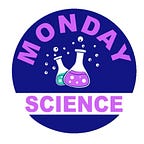Episode 2 (Relaunch): A conversation with Dr Saskia Popescu: COVID19, a marathon, not a sprint!
Written by Francesca Jacklin and edited by Dagny Reese
For episode two of our relaunch, please check out this episode on our new YouTube channel, below:
Dr Saskia Popescu is an infectious disease epidemiologist and infection preventionist and in this episode, Dr Bahijja Raimi-Abraham has the opportunity to chat to her about zoonotic diseases, COVID-19, and its impact on healthcare. Dr Popescu’s role centres around preventing the spread of infectious diseases in healthcare environments, and helps hospitals prepare their responses against biological events. In this episode, she explains to us exactly what zoonotic diseases are and their role in outbreaks of infectious disease. She also delves into what we know about COVID-19 so far, how we can respond to the outbreak in terms of public health, and the challenges we face with personal protective equipment, testing, and more.
(Dr Bahijja): Can you explain what zoonotic diseases are?
“Zoonotic diseases are diseases that spread between animals and people. During spillover events, a pathogen is transmitted from a reservoir species, sometimes resulting in an outbreak in a new host species…”
(Dr Bahijja): What is COVID-19 and what do we know so far about its origin?
“COVID-19 is the disease caused by the virus SARS-Cov-2. This novel disease is one of the coronaviruses, which is a large family of illnesses in humans and some animals. We know that there is a definite zoonotic element to SARS-Cov-2 but there is also human-human transmission. There is still a lot to learn about the zoonotic pathways of SARS-Cov-2 and it is too early to understand how transmission may occur between owners and pets…”
(Dr Bahijja): What is the relationship between MERS, SARS, and COVID-19?
“SARS-Cov-2 is a new member of the coronaviridae family with SARS and MERS. We still see sporadic outbreaks of MERS, but SARS has not been recorded in the population since 2003…”
(Dr Bahijja): How is COVID-19 spread?
“SARS-Cov-2 is a respiratory pathogen. It is predominantly spread through respiratory secretions, coughs, sneezes, sometimes talking. In a medical setting, aerosol procedures would also be a source of transmission. We are not really seeing airbourne transmission with COVID-19 (as in tuberculosis), it mostly spread via droplets. Dirty hands or surfaces are also causes of transmission via somites, contamination by people with high viral loads. That’s why its so important to wash hands regularly and not touch your face…”
To hear the full conversation, listen to episode 2 on the Monday Science Spotify!
If you have any questions you’d like to be answered by Dr Bahijja, feel free to send them in via the website chat, or email MondayScience2020@gmail.com. You can also send us your questions as a voice message via
https://anchor.fm/mondayscience/message. We love to hear your thoughts!
